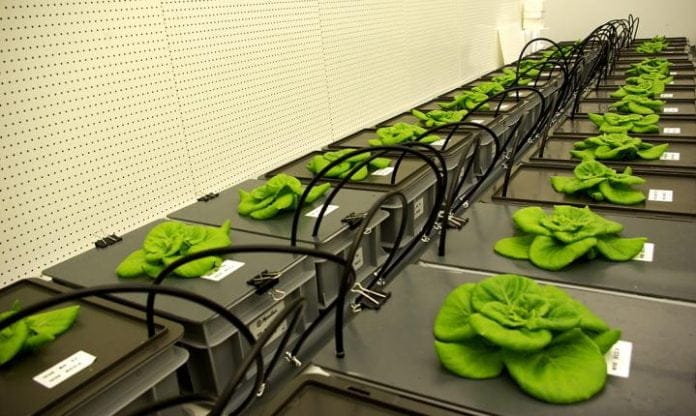
FRESH food is so attractive to astronauts that they toasted with salad when they were able to cultivate a few lettuce heads on the International Space Station three years ago.
In 2021, beans are on the menu to be grown in space, planted in high-tech planters developed at the Norwegian University of Science and Technology (NTNU).
“Astronauts like gardening and everything that reminds them of life on earth. They enjoy tending and watering the vegetables, and getting them to germinate,” says Silje Wolff, a plant physiologist at the Centre for Interdisciplinary Research in Space (CIRiS), which is part of NTNU Social Research.
Wolff has just completed an experiment that involved growing lettuce for space. The lettuce was planted in artificial soil made from lava rock. The goal is for the plants to grow directly in water that is supplemented with plant nutrients.
“The dream of every astronaut is to be able to eat fresh food – like strawberries, cherry tomatoes or anything that’s really flavorful. Someday that will certainly be possible. We envision a greenhouse with several varieties of vegetables,” says Wolff.
The longest stays at the International Space Station have been six months. People travelling to Mars will need to be prepared to stay in space for at least a year.
The European Space Agency plans to build a lunar base in 2030 as a stopover on the way to Mars. NASA plans to fly directly to the planet with a target landing date of 2030.
“The way space travel works today, it’s almost impossible to take along all the resources you need. That’s why we have to develop a biological system so astronauts can produce their own food, and recycle all of the resources,” says Wolff.
Today’s astronauts eat only freeze-dried and vacuum-packed foods.
“Astronauts struggle with having little appetite. They often lose weight. Addressing the psychological aspect of eating something fresh is one of our goals. Vacuum-packed food doesn’t really remind you of food. Having something fresh that triggers the appetite and the right receptors in the brain is important,” Wolff says.
NTNU and CIRiS are collaborating with Italian and French researchers in their quest to cultivate plant-based food for long space journeys.
CIRiS tests the new equipment made by NTNU’s technical workshop – very sophisticated planters that regulate all the water, nutrients, gas and air the plants need. In space, all the water and food has to be recovered. This means that plant fertilisation needs to be as precise as possible.
Wolff has conducted experiments in climate-regulated growth chambers in the Netherlands as one aspect of this research.
Of all the nutrients plants use, they use nitrogen the most. During her experiments, Wolff looked at different nutrient doses and how they affected the plants’ water uptake.
“We found that plants can, in a way, ‘smell’ the amount of nutrients available to them. When the nitrogen concentration is very low, the plant will absorb more water and thus more nitrogen until it reaches an optimal level. The plant has a mechanism that turns on when the nitrogen level is adequate. Then it adjusts both nitrogen and water absorption down,” says Wolff.
Everything that can be tested on Earth has now been carried out. The next step is to grow beans in space to observe the effect of no gravity on plants’ ability to transport water and absorb nutrients. Simulating the absence of gravity can’t be done on Earth.
The beans are placed in a centrifuge to sprout and grow in the space station.










